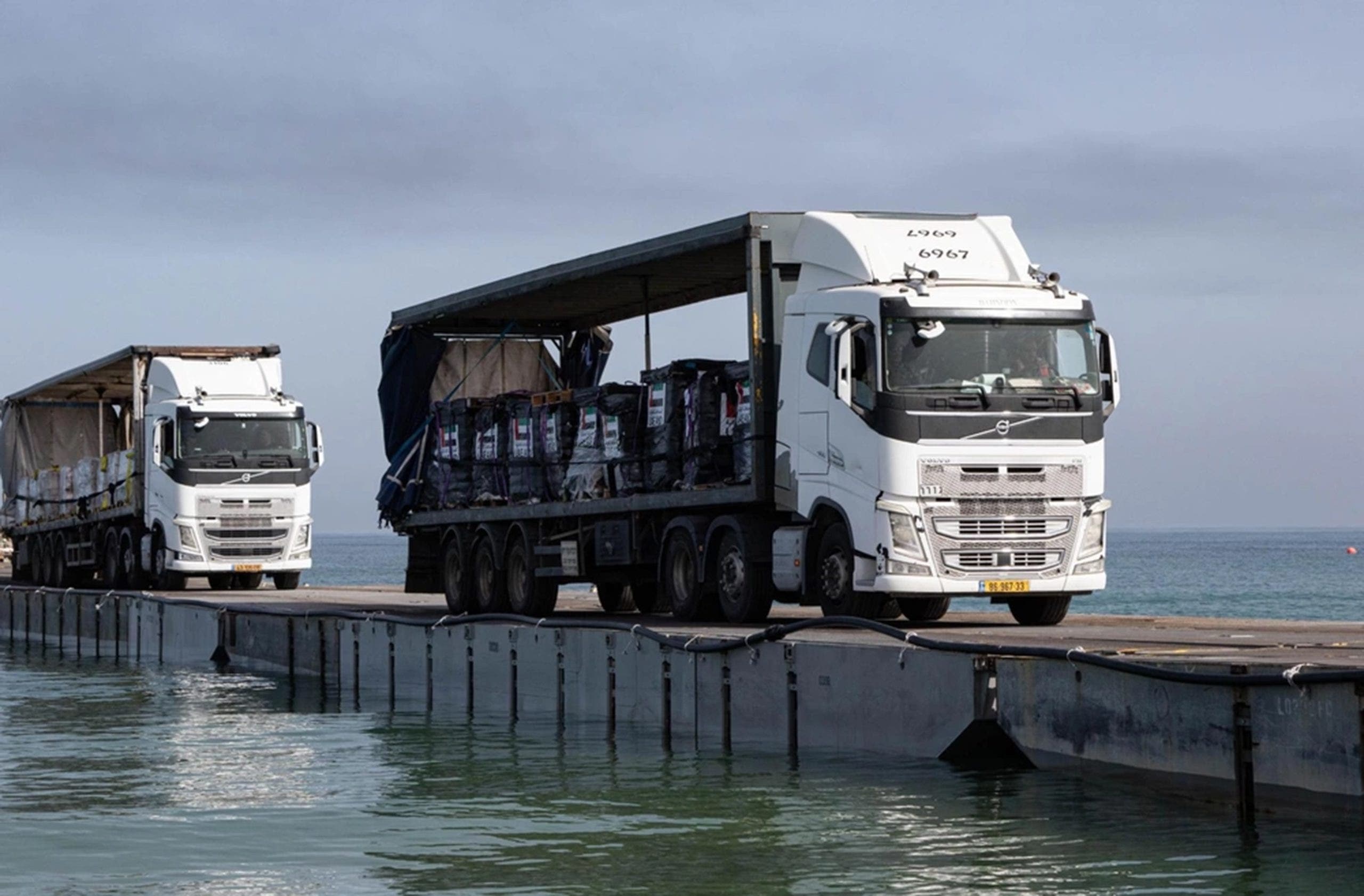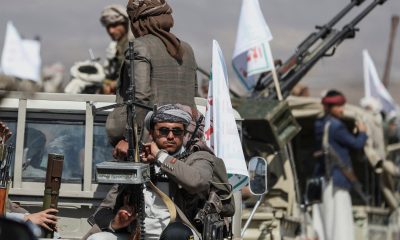News
Aid begins to enter Gaza by land after US ‘floating pier’ is damaged by weather.

A U.S.-made “floating pier” on the Mediterranean Sea was damaged by weather, prompting aid to flow into Gaza from southern Israel. Egypt closed its side of the border with Gaza when Israel took control of the Rafah crossing, causing aid to be redirected through Israel. The United Nations workers faced challenges in accessing aid due to heavy fighting near the Kerem Shalom crossing. The damaged pier, constructed by the U.S. military at a cost of $320 million, has been a critical conduit for aid into Gaza since its construction.
Trucks carrying humanitarian aid from the United Arab Emirates and the United States Agency for International Development have been using the Trident Pier to access Gaza. However, two of the vessels supporting the pier were detached by choppy seas and ended up on a beach in Ashdod, Israel. Efforts to recover the vessels are underway with assistance from the Israeli Navy. The Pentagon confirmed that none of the 569 metric tons of aid delivered into Gaza through the pier had reached Palestinians as of last week.
Roughly 1,000 U.S. soldiers have been involved in building and operating the damaged pier, with no U.S. troops entering Gaza directly. Despite the damage suffered, the U.S. and Israel maintain that the pier is still operational. The Israeli navy is working to salvage the detached vessels to restore full functionality to the pier. Maj. Gen. Pat Ryder confirmed delays in aid delivery due to the pier damage, with three U.S. troops sustaining injuries during operations on the pier in the past week.
The aid deployment through Israel has become vital in light of the ongoing conflict between Israel and the Palestinian Islamist group Hamas. The U.S. and other countries have been using the pier to send aid to the people of Gaza amidst the hostilities. The contentious situation at the Rafah crossing, with Egypt demanding the return of control to Palestinians, has further highlighted the importance of alternative aid routes through Israel. The aid flow through southern Israel has been crucial in ensuring essential supplies reach those in need in Gaza.
The damaged “floating pier” incident has fueled growing controversy over the cost and security concerns surrounding aid operations into Gaza. Despite the significant investment in constructing the pier, challenges such as weather-related damage and security risks have raised questions about the sustainability and effectiveness of such endeavors. The ongoing conflict and tensions in the region add another layer of complexity to the aid delivery efforts, highlighting the need for coordinated and strategic planning to ensure aid reaches those affected by the crisis. The involvement of multiple stakeholders, including the U.S. military, Israeli authorities, and international organizations, underscores the complexity and challenges involved in providing assistance in conflict-affected areas like Gaza.

-

 News6 days ago
News6 days agoHouthis in Yemen arrest 11 UN employees and aid workers
-

 Auto6 days ago
Auto6 days agoFerrari intends to continue producing V-12 engines until they are prohibited by law.
-

 News7 days ago
News7 days agoKing Charles keenly feels the distance from Prince Archie and Princess Lilibet and wishes to see them as often as he can.
-

 News7 days ago
News7 days agoPhoto: 12-year-old machete murderer seen with 16-inch knife in his pants before fatal stabbing
-

 News5 days ago
News5 days agoResurfaced Interview from 2023 Shows Biden Saying His Son ‘Did Nothing Wrong’ Despite Guilty Verdict
-

 Videos7 days ago
Videos7 days agoTop 10 WWE NXT moments: WWE Top 10, May 28, 2024
-

 News5 days ago
News5 days agoDid Luke D’Wit, the killer of fentanyl, also murder his father and grandfather? Police investigate their deaths after the 34-year-old was convicted of poisoning a married couple in their £1m home.
-

 News7 days ago
News7 days agoLive Updates from Apple WWDC 2024: Expected Announcements Such as iOS 18, AI Features and More











